
A recent Moore Stephens study found that companies spent almost $100 billion on digital marketing last year, which is a 44 percent increase from the prior year. This includes everything from advertising to search engine optimization and new applications like voice-activated assistants. Much of the increase according to the report comes as bigger companies start to take management of these channels in-house instead of using outside agencies.
Marketers at big companies know that the online space represents a huge opportunity for targeting their ideal customers with messaging specifically created for them, and they are investing the money to capitalize on the trends they see.
We can learn from what they are doing. Here are 10 of the best tips I have found from big companies that small businesses can use to optimize our social media profiles.
We can take advantage of speaking directly to current and potential customers. One of the first steps is to optimize our different social profiles to help the algorithms understand who we are and to improve our rankings in search results. Not a ton of people will read our complete profile, but for those who do, it can help them decide to follow us and share our content.
1. Be yourself. Show your personality.
Write in the first person (“I” and “We”) instead of third person (“The company”). It helps you come across more real. It also shows off the person or people behind the company. See the difference in the following?
Third Person: [Company Name] is passionate about helping people learn how to invest their money.
First Person: We’re passionate about helping people learn how to invest their money.
Similarly, show off your personality. Share a personal story or detail if you can. Show the people who view your profile the people behind the company and who will be publishing the posts. Use every day language aligned to your brand and personality.
Examples: Nordstrom’s Pinterest profile uses “we” and clearly tells what they pin, while Wendy’s Twitter profile shows off their personality.
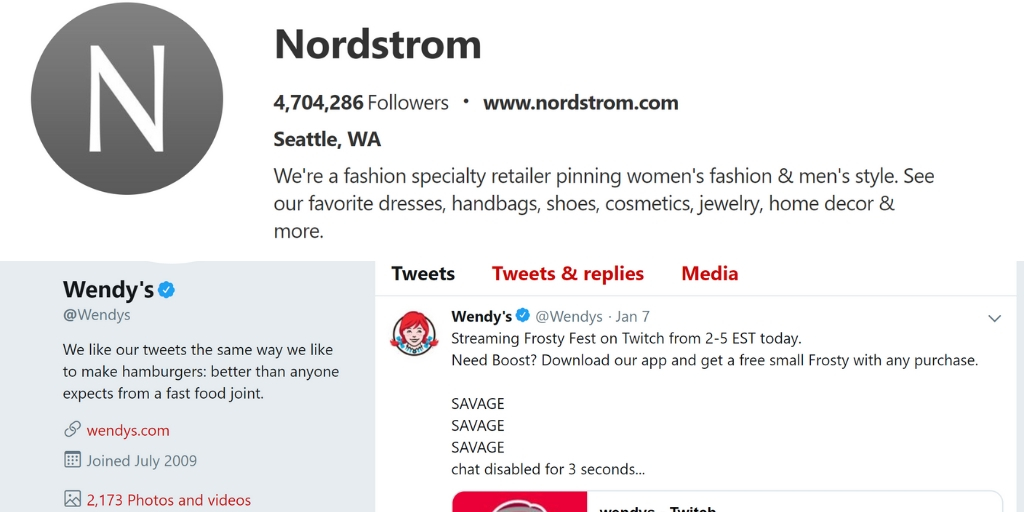
2. Tailor your message.
Don’t try to appeal to everyone. Instead, narrow in on your target customer and make your profile relevant by speaking their language. But, skip the buzz words and keep it brief. Social media is all about making the most impact in the least number of words.
Also, be sure your profile clearly articulates why someone should follow you by explaining the value you’ll provide.
Example: Patagonia knows that their customers are passionate about the environment and corporate responsibility. So they make this point very clear and simple in their Pinterest bio.
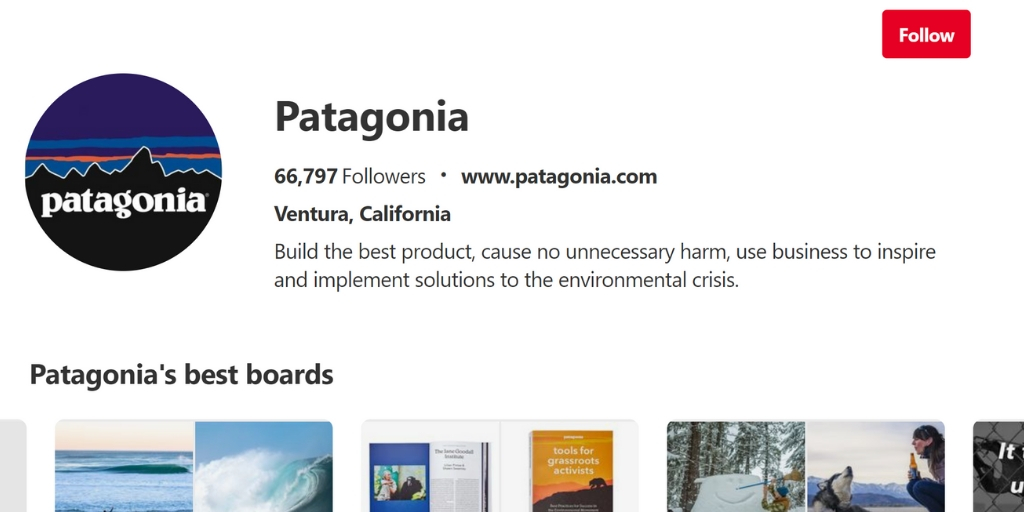
3. Write in active voice to have a strong impact.
Don’t remember high school English class? No problem. Passive voice is when someone or something receives an action. In active voice, the person or thing performs the action.
Passive Voice: Best-in-class websites are built by our award-winning team.
Active Voice: Our award-winning team builds best-in-class websites.
Active voice does what it says – it makes your content sound more engaging. Use active voice to sound more authoritative, which is especially important for your social media profiles where you want to position yourself as an expert in your field.
Example: UPS’ Facebook profile uses active voice and action words to describe how they help solve problems for their customers.
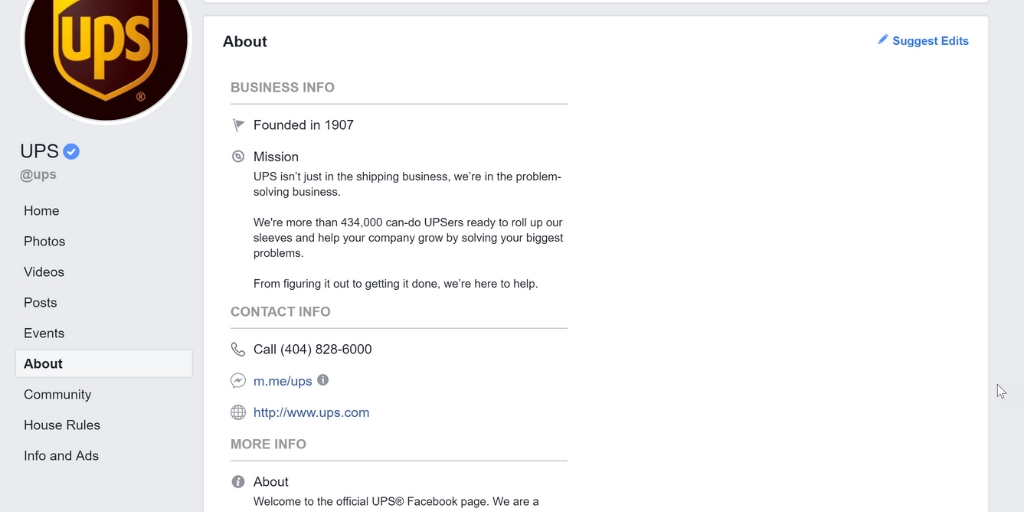
4. Encourage specific hashtags if appropriate for the channel.
Some channels, like Twitter, continue to have users use hashtags to help find content. On other platforms, like LinkedIn, it’s not as necessary. Tailor your profile to what is popular for each channel.
Also, search each hashtag before you include it – do you want your company and content to be included in the results? If the content doesn’t fit your brand or your target audience, skip it. Search the hashtag every couple months to make sure the results are still a good match, or if a new hashtag has popped up that is better for your business.
Examples: Apple’s Instragram account keeps it short and simple, asking people to use a specific hashtag to help share stories people tell on their iPhones. Similarly, Nordstrom’s Twitter account suggests a hashtag for people tweeting about the company.
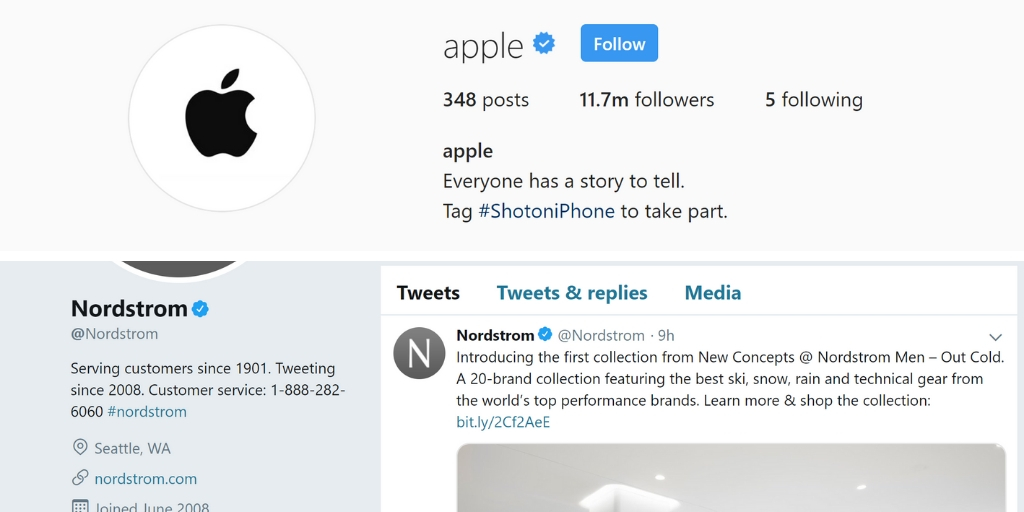
5. Optimize your user name.
Make sure your user name is clearly connected to your business name so that people searching for you on social platforms can easily find you. Also try to use the same name across every platform. Your goal is to make it as easy as possible to find you on each channel.
Examples: Microsoft uses the same handle on Twitter, Facebook and LinkedIn. Comcast has three different Twitter accounts with clearly defined names and descriptions for customer service depending on how customers search for them: corporate content, Xfinity, and Comcast Business.
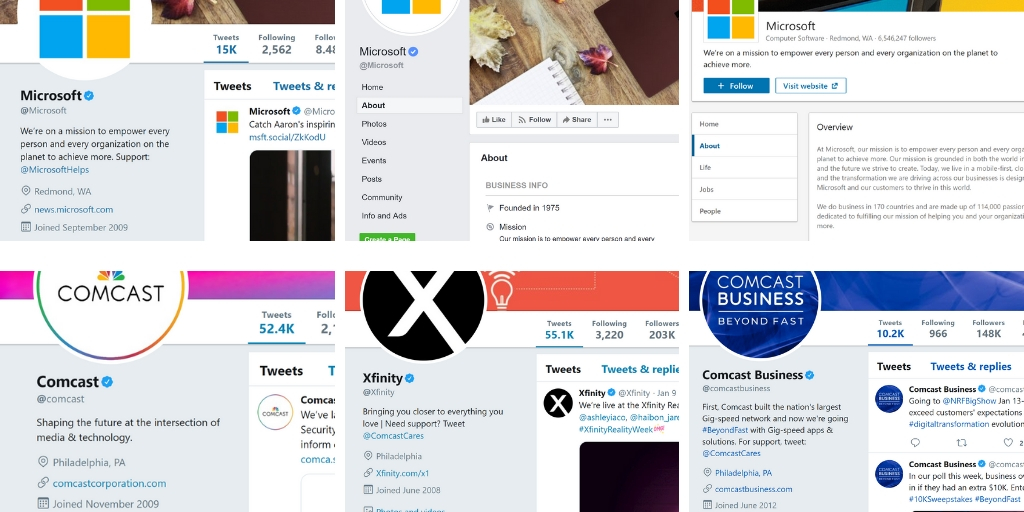
6. Check out your competitors.
What key words are your competitors using in their profiles? How are they articulating their value? How can you make yourself stand out from them?
While you’re checking out their profiles, take a look at the posts they publish as well to get ideas for the type of content that will resonate with your target audience.
7. Use your profile photo to tell your story.
When space is at a premium, you need to make each opportunity in your profile count. This includes your profile and banner pictures. Your images send a strong message about who is behind the company and posts. Use a logo only if you have a well-recognized one. Otherwise, stick to a photo of you or someone else at the company. People like to see and hear from people, not faceless companies they don’t know.
Use the same or similar profile photos on every channel to keep your branding consistent. Although, don’t be afraid to tailor them for each channel, such as what Google did in the below examples.
Also, be sure to save the image file with your keywords to help with search engine optimization.
Example: Google presents a consistent story across its social media channels but tailors its photos to what will work for each platform: Instagram, LinkedIn, Facebook, Twitter, and YouTube.
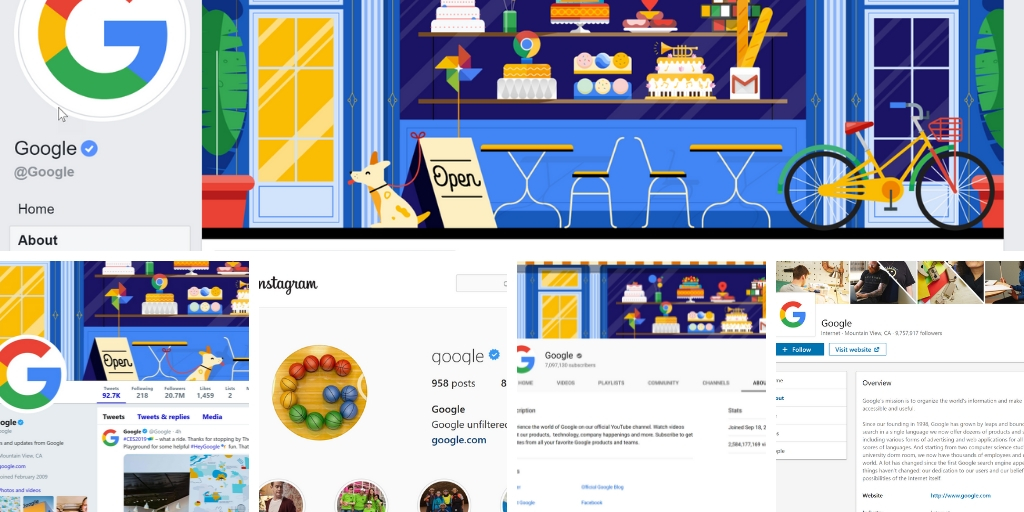
8. Make your link count.
Most social media platforms allow you to include one or more links in your profile. If you need to pick one link, make it count. Instead of sending folks to your homepage, consider sending them to the page where they can sign up for your newsletter list. Or to see what products you have to sell.
Examples: Krispy Cream Donuts changes their links in their Instagram profile. I’ve seen location search and also a link to a recipe on their site. Southwest Airlines includes a link to a feedback form on their Instagram and Twitter profiles so people know how to reach them for a response.
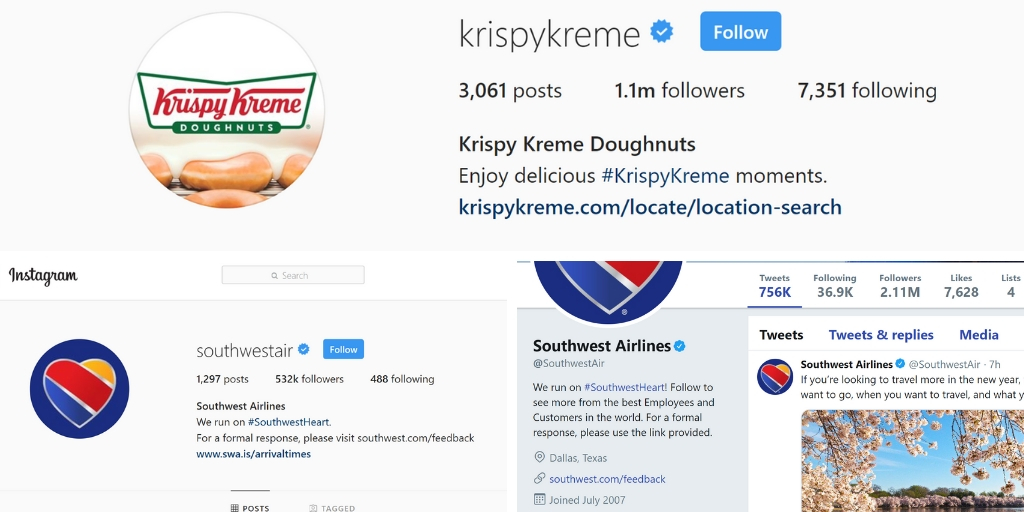
9. Choose Your Words Wisely.
Our profiles can help the social media algorithms to understand who we are and what we do. At the same time, most have space limitations. So make sure each word you choose counts in helping visitors and the algorithms discover you.
Examples: E-Trade makes it clear the services they provide and who they are meant for on their Facebook profile while providing a list of words people might search for. Similarly, AT&T’s Facebook profile and Verizon’s Facebook profile focus on describing the value they provide customers.
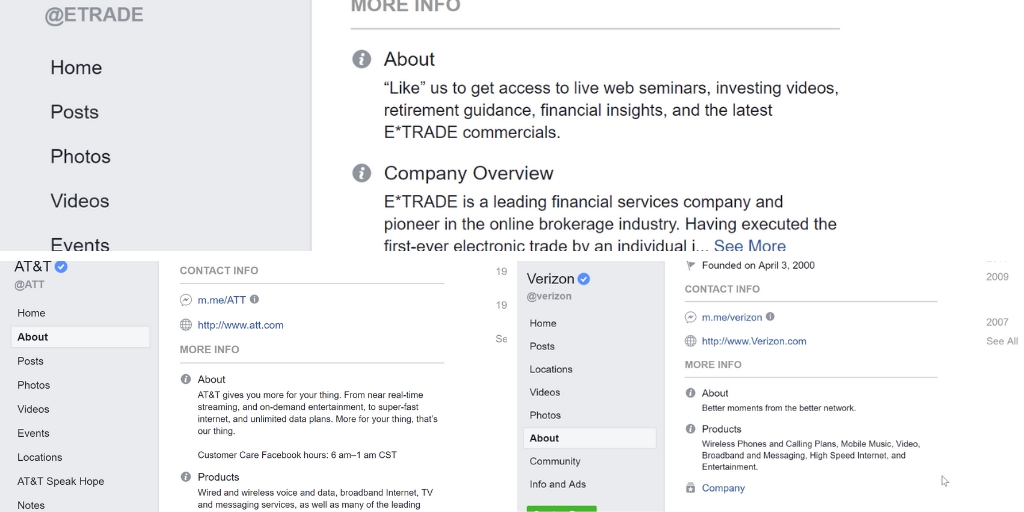
10. Put it all together and tell your story.
Use the following prompt as a starting point to pull all of these tips together. Adapt this to your story and for each social channel. By optimizing each profile, while making it consistent, you’ll reinforce your brand and the value you provide.
We/I help [target audience] to [describe the challenge you help them overcome or the benefit you help them receive] by [what you do].
Example: Johnson & Johnson’s Instagram profile does a great job explaining their aspirations as a company with the details of what is important to them.
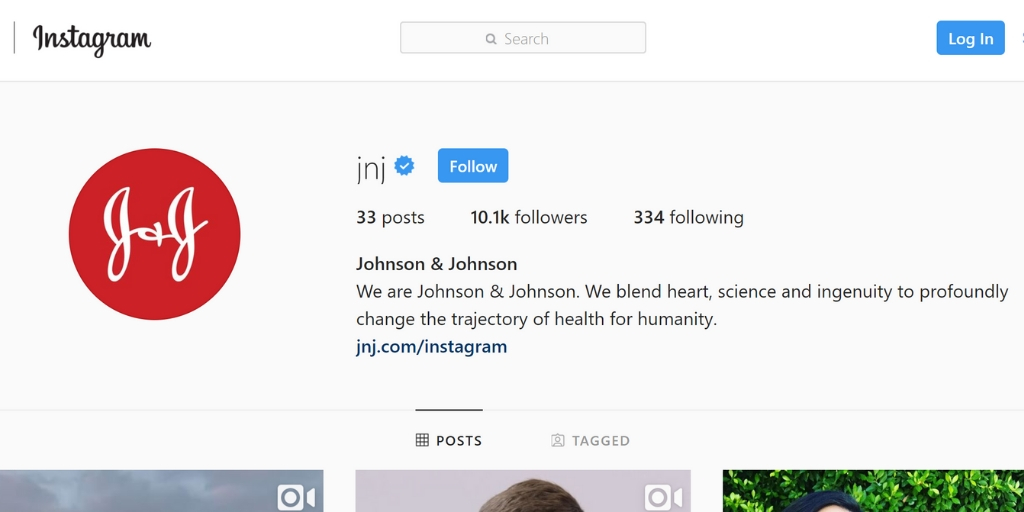
Take Action
Don’t feel like you need to do all of these. Pick a few from the list that make sense for your business and get started today. Little actions that you make daily will add up over time.
You can also set up a calendar reminder for every few months to review your current profiles and add in any new clients you’ve worked with, new services or products you offer, or anything else. While you’re there, take a look at your content from the past few months to see what has performed well to see if that gives you any insights as you plan out your posts for the next few months.
If you need help coming up with your story for your business, check out these 25 Questions to Help You Discover Your Business Story. I also have advice for how to fix four common writing mistakes we make when crafting our stories.
Have other tips that have worked well for your social media profiles? Or questions on the above? Please share in the comments below.
Cover photo by rawpixel on Unsplash

